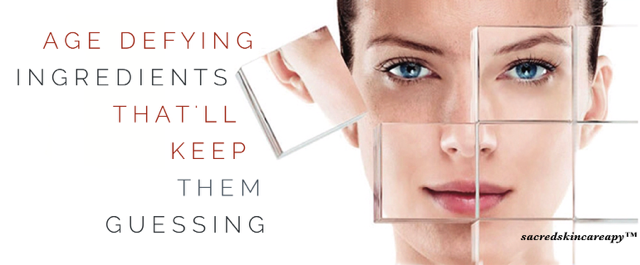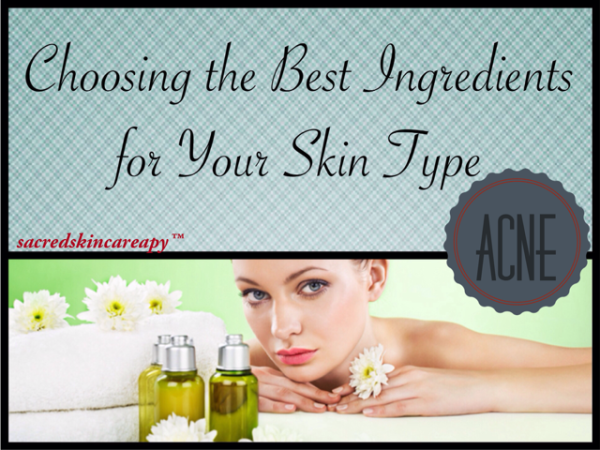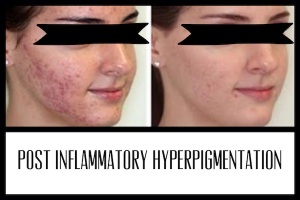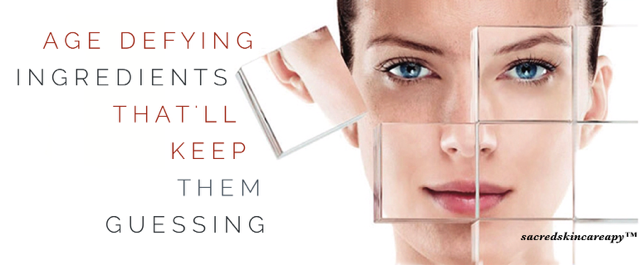It goes without saying that I welcome becoming a little wiser with each day, but that doesn’t mean I want my appearance to reflect all of the (ahem) knowledge and experience I’m gaining.
Living life carefree in my 20s I paid pretty much zero attention to anti-aging products, let alone skin care ingredients. 40 seemed sooooo far away! I always wore sunscreen and for the most part, kept covered up, rarely suntanned, etc. Living free and young at heart, I wasn’t thinking about the yet unknown impact approaching middle age was to have on my body and skin. But then – I became an esthetician. Skin health became my #1 and as I crept closer to 40 with every passing year I began to notice subtle differences reflecting back at me in the mirror and my dive into ingredient education began.
You see, as I blew out the candles on my mid-life birthday cake, I quickly realized I wasn’t quite ready to bid adieu to my vibrant and youthful self. I like looking younger! The wish I made? Time to put the brakes on this prematurely aging business.

There are many wonderful ingredients that address our aging concerns. Keep in mind as you’re reading that there’s no miracle cure and no ‘one product’ that will be packed with all of the above (or in this case, all of the below) to turn back time. Each of these ingredients benefit the skin in unique ways and provide noticeable differences depending on the how they’re delivered to the skin. I’ve included the best delivery systems per ingredient type below.
B Vitamins
B vitamins provide an abundance of health benefits, both internally and externally. Essential for cell metabolism, B vitamins give us energy and support the nervous system and immune system. There are 8 separate B vitamins, each of which has a specific function, however they all work together to maintain health and vitality. Water soluble, B vitamins aren’t retained by the body, so it’s of utmost importance to get the recommended amount in our food and supplementation, if necessary. In skin care products, B vitamins are especially desirable as an ingredient in moisturizers or serums, as they help damaged cells heal and regenerate quicker and increase the production of ceramides and fatty acids, two major components of the skin’s outer protective barrier. Look for niacinamide (B3) in moisturizers.
Alpha Hydroxy Acids
These gentle and effective acids derived from fruits and milk help smooth away fine lines, minimize surface sun damage, provide radiance and allow other age defying ingredients to penetrate the skin and work more effectively. AHAs like glycolic and lactic acid are common ingredients found in cleansers, exfoliants, and moisturizers. These acids are typically better for normal, dry or sun damaged skin because they help bind moisture, improve healthy collagen production and smooth uneven skin texture. Glycolic can also benefit dehydrated acne prone skin. BHA (Beta Hydroxy Acids) like salicylic tend to be better for oily skin and also works well to reduce redness associated with rosacea.
You probably know the saying “too much of a good thing…” – This couldn’t be more true as it pertains to AHAs and BHAs. It’s important not to overdo the exfoliation, as it can weaken the barrier of the skin and comes with a Catch-22: while AHAs, especially, can help alleviate the effects of photo-aging (that pesky sun damage that shows itself by way of fine lines, crows feet and discoloration) any treatment or product protocol containing AHAs should always be followed by proper SPF, since the purpose of these skin loving acids is to exfoliate dead skin cells, allowing fresh healthy cells to ‘surface.’ Without proper SPF protection, these new cells susceptible to sun damage and sun sensitivity.
Sacred Skin Tip: Leave the AHA or BHA exfoliation to your skin care professional. Instead, look for hydroxy acids in your cleansers. This is an effective way to use these ingredients at home without increasing risks of over-exfoliation, since cleansers are rinsed away. It’s always best to alternate between an AHA of BHA cleanser and a gentle cleanser, too.
Hyaluronic Acid
A naturally occuring substance in the body, hyaluronic acid regulates cell renewal, cushions our connective tissues, and is an important component in hydrating our skin and helps skin to maintain elasticity. Not only does HA improve hydration in skin cells, it also stimulates collage production (half of the body’s hyaluronic acid is found in the collagen of the skin). HA also works as an antioxidant, fighting free radical damage. As we begin to age, our natural hyaluronic acid breaks down and isn’t replaced, making this water loving molecule an important part of your age defying regimen. Applied topically, HA creates a moisture barrier making skin smooth and supple and effective in minimizing the appearances of fine lines. It’s also a wonderful rejuvenation treatment for the skin in the form of dermal fillers, available at medical spas. Since hyalronic acid already exists in the body naturally, it’s a safe alternative to non HA fillers. Look for hyaluronic acid in serums, moisturizers, toners, and eye creams and in dermal fillers with licensed individuals.
Coenzyme Q10
Chances are, if you take supplements, or have ever browsed your local natural food market or vitamin shop, you’ve seen varying sized bottles labeled with this essential vitamin. in maintaining youthful skin, Coenzyme Q10 (which is actually vitamin Q) can help build the foundation necessary for younger-looking skin. It works by protecting the elastic tissue and collagen that shape your skin. As you can probably expect, with each passing year our natural coenzyme Q10 levels diminish, slowing down the skin’s ability to rejuvenate and protect itself from damage. To build levels of the coenzyme, many people find that taking a supplement in addition to using moisturizers containing Q10 yields optimal results. There’s a bonus to taking a supplement, too — some researchers believe it can aid in preventing heart disease, managing diabetes and gum disease.
Green Tea
By now, most of us have heard about all the wonderful health benefits that come with drinking green tea regularly. It helps improve blood flow, lowers cholesterol, and makes us heart healthy. This amazing antioxidant rich plant is steeped (see what I did there?) with nutrients that recharge skin. It’s the polyphenols in green tea that provide healing medicinal properties that have an energizing and stimulating effect on aging skin. Especially beneficial under the eyes, green tea has a wonderful effect on brightening dark under eye circles. The antioxidant properties help aid in preventing and repairing the damage done by free radical oxidation, which breaks down skin cells, by reducing inflammation, building collagen, and reducing cell damage.
Sacred Skin Tip: Green tea is often listed as Camellia Sinensis or EGCG in skin care products. Look for it in cleansers, serums, and eye creams.
Vitamin C
One of my absolute favorite, tried and true skin care ingredients! I LOVE Vitamin C. This amazingly powerful antioxidant protects skin from free radicals — those nasty environmental factors (pollution, sun, oxygen quality) that we can’t escape unless we stay locked away indoors. Vitamin C boosts collagen production for firmer skin, it reduces the appearance of sun damage, strengthens the barrier response of the skin, enhance skin’s repair process (great for reducing post-inflammatory hyperpigmentation from breakouts) and helps boost your skin’s natural defenses against the sun while allowing your sunscreen to work more effectively. L Ascorbic Acid is the most potent. Look for it in cleansers, facial cloths, serums, moisturizers, and sunscreens.
Peptides
Because of the successful results of much clinical research, peptides are becoming increasingly popular as anti-aging skin care ingredients. Peptides are short chains of amino acids, the building blocks of proteins. They signal the skin to create collagen, which is essential for firm, healthy skin. When included in anti-aging treatments, peptides are believed to stimulate the production of collagen.
Retinol
Many refer to topical vitamin A as the Holy Grail of skin care ingredients. No other ingredient has been studied and tested more. Retinol works by enhancing and stimulating cellular turnover and increasing collagen production for smoother and younger-looking skin. It also helps reduce existing signs of aging, reduces acne, exfoliates skin, strengthens aging skin, and helps reverse sun damage. In a nutshell? It’s pretty freaking amazing.
Just be aware that adding retinol to your skin care regimen oftens comes with little annoyances in the beginning. Redness, dryness, and even skin flaking are normal side effects when your skin is adapting to retinol. For the first couple of weeks it’s a good idea to use retinol sparingly. Try easing into it by applying it every third evening; once absorbed, follow with a moisturizer containing ceramides and vitamin B3 (niacinamide) as these help strengthen the skin barrier allowing for better absorption with little or no irritation. Retinol and its derivatives labeling in order of potency: retinol, retinyl palmitate, and HPR (Hydroxypinnacolone Retinoate)
Sacred Skin Tip: Packaging, packaging, packaging! Don’t buy retinol creams in twist-lid or see through jars as air and light exposure degrade effectiveness. Look for products in opaque containers (preferably with a pump) or an aluminum tube.
Vitamin E
Yet another powerful age defying antioxidant, vitamin E is a powerhouse when it comes to reversing the type of skin damage that leads to dryness, collagen destruction and fine lines. Vitamin E neutralizes free radicals and helps protect cell membranes from oxidative stress by environmental factors like sun exposure. It also harmonizes well with vitamin C creating a powerful free radical fighting team. By strengthening the skin barrier, it also helps to assist wound healing but don’t apply it a fresh wound as it can cause dermatitis. Often these healing properties are why pure vitamin E oil remains popular for treating scars, healing cuts and soothing dry, chapped feet and hands but keep it away from your face!
Sacred Skin Tip: Vitamin E on an ingredient label may be listed as tocopheryl acetate, tocopheryl linoleate, tocotrienols, alpha tocopherol and tocopheryl succinate. Look for it in moisturizers for face and hands or lip balms for severely dry lips.
And of course, no anti-aging list wouldn’t be complete without —
Sunscreen
If you use only ONE product to keep your skin from prematurely aging, sagging, accumulating blotchiness or brown spots – USE SUNSCREEN. It’s a no-brainer that forgoing sun protection can result in uncomfortable sunburns and worse case scenario, skin cancers. I’m not even going to go there in this blog entry, though. The focus of our topic today is ingredients for youthful, vibrant, glowing, smooth, supple skin.
And ladies and gentle readers, tanned skin makes you look older. It doesn’t make you look younger, or bronzed, or golden. It AGES you. By at least 5, and often TEN years.
Using a broad spectrum sunscreen (I recommend a zinc based) will protect you from both harmful UVA & UVB rays. Even better, look for one containing antioxidants because they boost effectiveness. And DON’T SKIMP. A teaspoon is the right amount for your face. If you’re outside, it’s important to reapply every two hours.
Did your favorite age defying ingredient make my list? Let me know in the comments section below.





